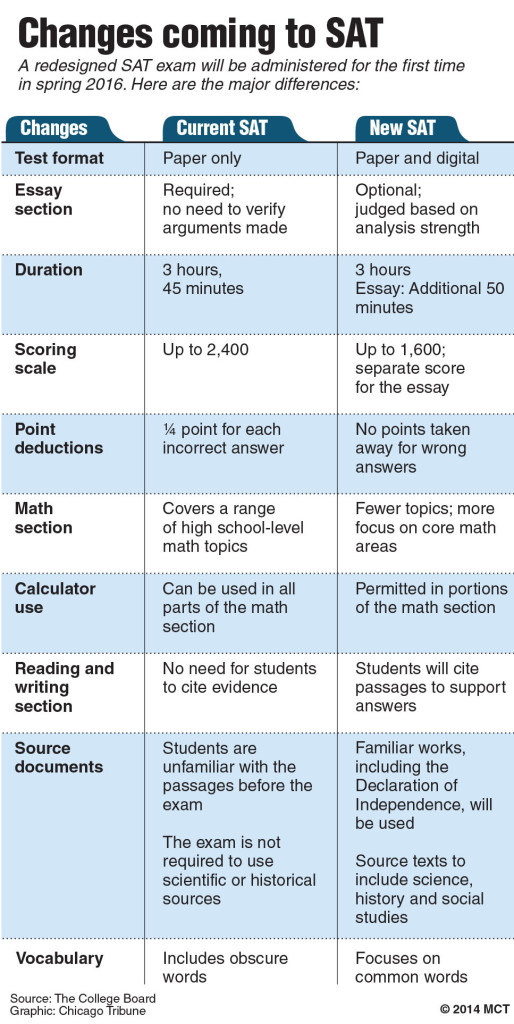Starting in 2016, when today’s freshmen will be in their junior year, a new revamped version of the SAT college entrance exam will be administered. First of all, the 25 minute essay, one of the most stressful parts of the exam for many, will be optional. Consequently, the perfect score will be 1600 points from the previous golden 2400, like it had been for many years before 2005. The bad news? many colleges will still require you the essay to be considered as an applicant. However, there is much more good news for the class of 2017.
The “SAT words” that have forced students to spend their nights with flashcards will be eliminated, as the test now will focus more on words that are widely used in college and career, such as “synthesis,” as stated by the Washington Post.
The quarter-point deduction for each wrong answer will be out of the redesign as well. These will especially benefit intelligent students who just don’t have have the money for SAT resources, making the SAT a more accurate measure of success in college.
These changes are also known to have been caused by SAT’s main rival, the ACT. In 2012, for the first time, the more students took the ACT than the SAT. In the redesigned exam, the SAT has become more like the ACT, with “no obscure vocabulary, [optional essay], no points… removed for incorrect answers, and …more of an emphasis on textual evidence across disciplines,” US News Allie Bidwell explains.
Most striking about the new SAT is the fact that College Board has partnered with Khan Academy to provide free online SAT prep videos via the College Board website. This will eliminate the need for expensive SAT tutors or prep courses, as the most reliable preparatory material can be found directly on the site. Though companies like Kaplan, the Princeton Review, and Atlas Test Prep may be unhappy about this change, it definitely levels the playing field for students of all socioeconomic backgrounds.
The SAT raises hopes for more students as it lowers its standards, but also hopes to “reward students who take high school seriously,” not just the “lucky ones” born into wealthier families.










